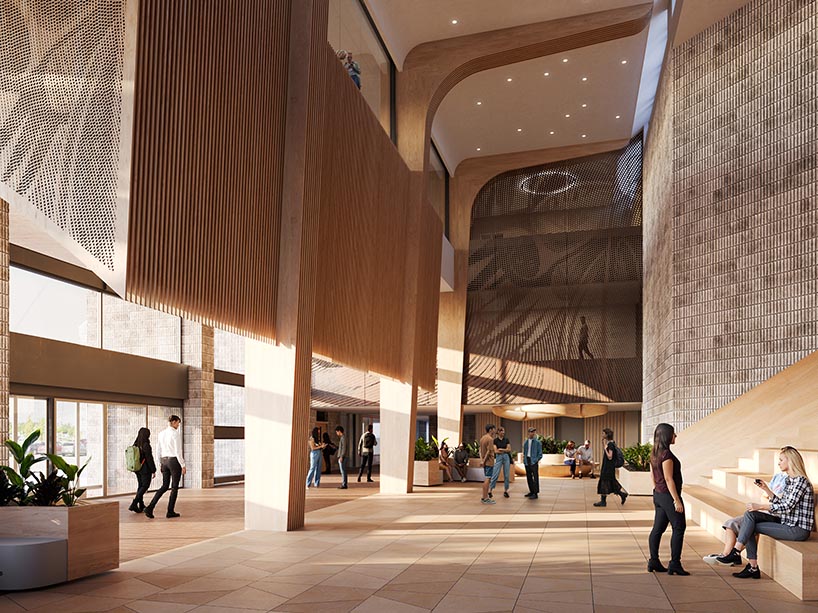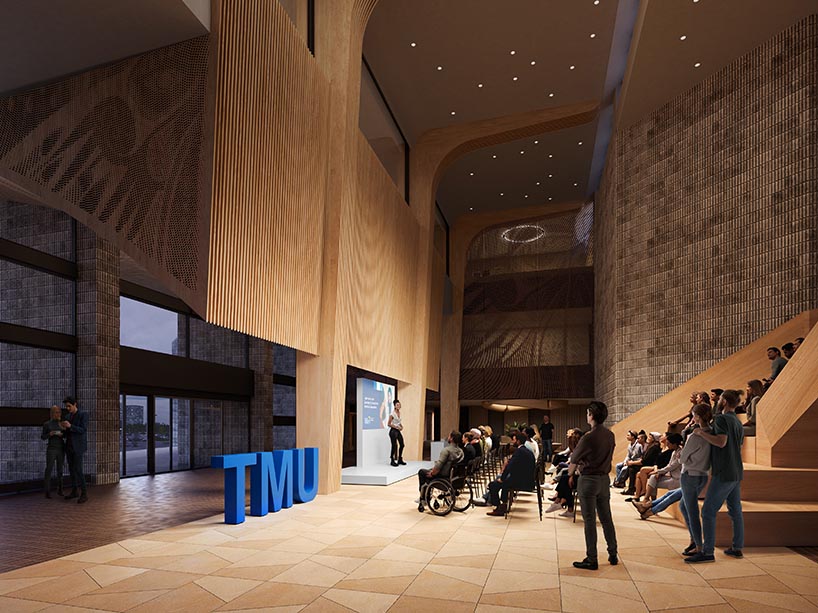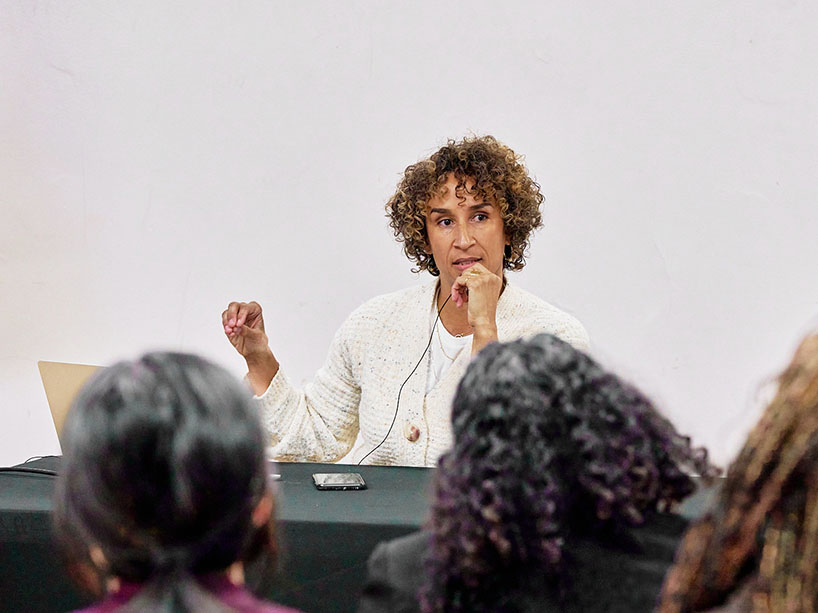Diamond Schmitt to design School of Medicine building

Rendering of the atrium in TMU’s future School of Medicine. The design elements include lighting that references the celestial sky – the sky being a guiding beacon – along with weathered steel screens that will feature imagery by a local artist. Rendering by PLAY-TIME, courtesy of Diamond Schmitt.
Diamond Schmitt (external link, opens in new window) has been selected as the primary consultant to design and plan Toronto Metropolitan University’s (TMU) new School of Medicine. Located in Brampton, the School of Medicine will transform the former Bramalea Civic Centre into a state-of-the-art medical school that will be home to medical students and a primary care clinic.
To complement the School of Medicine’s design goals of belonging, community and connection to nature, Indigenous design elements will be integrated into the plan. Diamond Schmitt has engaged Two Row Architect (external link) , an Indigenous-owned design firm, to consult on the project.
“Equity, diversity and inclusion and reconciliation will be intentionally infused throughout all facets of the School of Medicine, including its physical environment,” said President and Vice- Chancellor Mohamed Lachemi. “This is the first-ever university building project to integrate TMU’s Indigenous Design Guidelines – developed in consultation with Indigenous community members – in the design process.”
The school will feature functional, flexible and collaborative active learning classrooms, lab and study spaces that will support various modes of pedagogy. A four-storey interconnected atrium at the primary west entrance will welcome students, staff and visitors into a vibrant, inclusive and safe environment where they can interact and engage with one another.
The library will provide quiet individual and group study spaces, and additional learning opportunities outside the classroom. Case-based learning teaching labs, simulation and digital anatomy labs will further bolster TMU’s experiential learning approach for its medical learners.
Other amenities include event, gallery and maker spaces established as central hubs for student activities, and a communal kitchen with a student-run internal herb garden that contributes to well-being. The north wing of the building will house the academic research and administrative offices for faculty and staff, and the south wing is designed as a hub for teaching and learning, anchored by the community clinic on the ground floor that will add much-needed health care capacity for the Brampton community.

The project is designed to LEED standards, repurposing an existing building to reduce the construction footprint and minimize energy and greenhouse gas emissions. Rendering by PLAY-TIME, courtesy of Diamond Schmitt.
“The School of Medicine will serve the Brampton and Peel communities with its many diverse groups of people. We are committed to building a space that provides equitable access, safe and inclusive places to gather, and opportunities to learn and engage with the landscape and each other,” says Dr. Teresa Chan, dean of the School of Medicine and vice-president, medical affairs. “We look forward to working with Diamond Schmitt to bring our vision to life.”
In alignment with TMU’s long-standing commitment to sustainability, the project is designed to LEED standards, repurposing an existing building to reduce the construction footprint and minimize energy and greenhouse gas emissions, with the integration of on-site renewable energy sources.
“The design of TMU’s School of Medicine embraces the brutalist architecture of the original civic building, while opening it up to become a welcoming and inclusive space for medical education,” says Cecily Eckhardt, principal at Diamond Schmitt.
“Designed to support the next generation of healthcare professionals, with many lab spaces to conduct simulation-based training and flexible work areas to encourage cross-disciplinary collaboration, the School of Medicine will not only build community amongst students and faculty, but be a truly integrated health centre, providing access to quality medical care to the community of Peel Region through clinical support programs.”
The School of Medicine is set to open in September 2025. This development is led by the Project Management Office within TMU’s Facilities Management and Development department, in collaboration with the School of Medicine leadership team.
Related stories
TMU announces location for future school of medicine
TMU signs three partnership agreements that will advance health-care education





